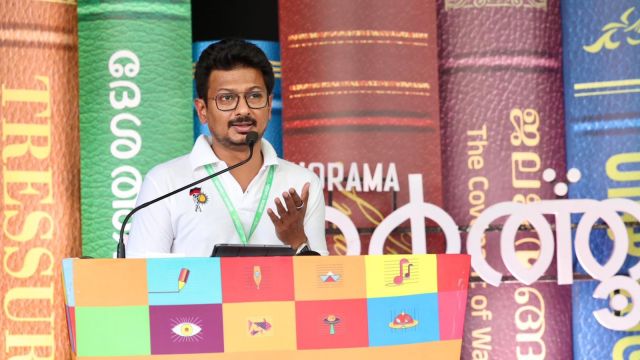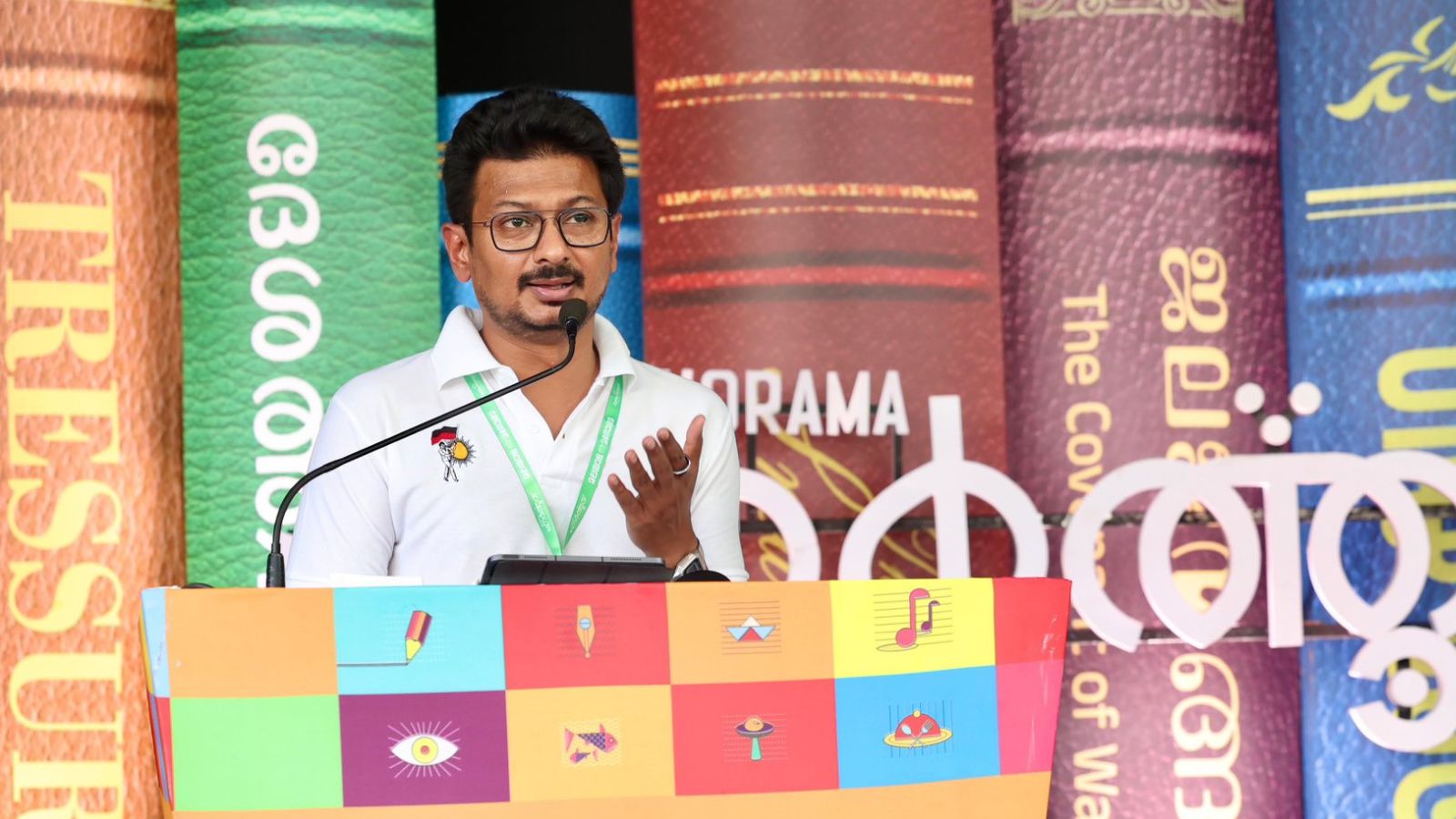
Udhayanidhi Stalin’s acerbic comment about Bollywood overshadowing other language cinemas in the North extends the age-old argument about linguistic autonomy and cultural identity to the visual arena. In recent times, South Indian films have gained immense visibility and popularity, especially since the advent of OTT platforms. On the one hand, there are the spectacular successes of technically state-of-the-art blockbusters like Baahubali, KGF, RRR, and Kantara, and on the other, the global aesthetic appeal of films made with moderate budgets like Joji, The Great Indian Kitchen, Kaathal — The Core, etc. Udhayanidhi, who represents politics and cinema now, was hinting at this turnaround which, in fact, provides a new setting and edge to the argument for linguistic federalism.
What is it that differentiates Bollywood from other cinemas in India? Its territorial ambitions always claimed the entire nation. Made in the country’s official language, it had the natural claim over the “national” market with its reach, transcending state and language borders by default. Historically too, Bollywood had its advantages over other cinemas: In the post-Independence decades, certain pan-Indian themes gave Bollywood films a national appeal — conflicts between the rich and the poor, village and city, tradition and modernity, themes like struggle for survival, dilemmas and turbulences arising from love that cuts across social and economic barriers, inter-generational family conflicts, unemployment etc. Beyond these thematic bondings, one important element that had genuine pan-Indian appeal was music. It was music that truly transcended linguistic boundaries, inspiring and triggering give and takes of various kinds across all languages.
But Bollywood’s claim over or struggle for the “pan-Indian” market comes with a tag — that of creating audio-visual language and narrative styles that are not too region-specific. In the Bollywood world, anything “regional” (read “regionalised”, as it actually has to be understood as a verb and not as a noun) becomes stereotypical; anything outside the Hindi belt is either an aberration or an exception. For long, Hindi cinema has spawned stereotypes like “Madrasis” (never differentiating between a Tamilian, Telugu, Kannadiga or Malayalee) who speak a strange tongue, the loud and boisterous Sardarjis, and drunken Goans.
It also had to resort to and create narratives with cultural and visual codes that were recognisable and relatable across cultural boundaries. In such narratives, the “regions” become mere “locations”. For instance, places like Ooty, Munnar, Darjeeling, and Kashmir were dreamscapes and exotic settings for their songs, devoid of their culture and history. As for cities, Bombay was “the” city, apart from Calcutta and Lucknow standing for distinct cultural identities. So, the flip side of being pan-Indian is that it doesn’t belong anywhere. The narrative spaces, characters and contexts have to be generic — the rich living in mansions and the poor languishing in slums, the idyllic villages with verdant landscapes and the ruthless city with its milling crowds, highrises and noisy traffic. The signs and signifiers have to be loud and clear, and the Hindi the characters spoke was sanitised — its umpteen regional variations and slang can only be accommodated as exotic or comical. So, what Bollywood had to offer was a fictional space that any viewer across India could easily occupy and fantasise about.
Interestingly, Bollywood always had connections with the South, the most visible, and predominant one being the sustained presence of South Indian actresses. From Vyjayanthimala Bali, Rekha, Hema Malini and Sridevi, it extends to Aishwarya Rai, Vidya Balan, Tabu, Deepika Padukone and Samantha Ruth Prabhu. Significantly, very few male actors made it big in Hindi, apart from a few cameos and guest appearances. There was also a period — post-1990s — when directors from the South like Mani Ratnam, Ram Gopal Varma, Priyadarshan, and Santosh Sivan gave Bollywood a fresh look and vigour. Though such interactions have been going on from the beginning, Bollywood forgets that it is more than or not just its Kapoors and Khans. If the directors of the ’90s moved from their “native” language to Hindi, the current generation of directors from the South do it the other way — they make blockbusters to capture the Hindi belt, breaking all records set by Bollywood, whether it be box-office collections, technical excellence or global reach.
It was the coming of television that radically transformed the field, making available diverse regional visual content. The demand for “regional” content created by television was further accentuated by the spread of digital platforms that could be accessed from across the globe. The post-liberalisation context saw Bollywood narratives becoming stale. Uprooted from the generic mindscapes and spaces it was entrenched in, Bollywood had to search for new settings and pastures. There was a shift to NRI themes and locales; the songs migrated into foreign landscapes in Switzerland or Australia, nationalist themes gave way to jingoism (espionage or military stories, celebration of newfound political heroes etc), and there was a spiralling of gory, visceral depictions of violence. This easy shift shows Bollywood’s fragile connections with culture, roots and locality.
In contrast, the South Indian cinemas, with no “pan-Indian” audience to pander to or calibrate the narratives for, always primarily addressed a niche audience that shared certain common characteristics, traditions, symbolisms and history. Obviously, these “regional” cinemas were rooted in culture and language and so, naturally rich in cultural and historical nuances, resonating with demographic diversity and fired by regional political ambitions.
Because of its commitment to locality and location, its narratives had to necessarily take into account and address the diversity within the region, which again made it more rooted, not merely through celebrating exotic traditions or iconic cultural symbols, but also in the way in which caste, gender or class issues and the conflicts arising from them are addressed and confronted. It is this intense sense of the local that makes them universal. Which is also why they are hogging all the attention in times when everything looks the same.
The writer is a film critic and documentary filmmaker



